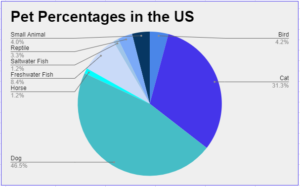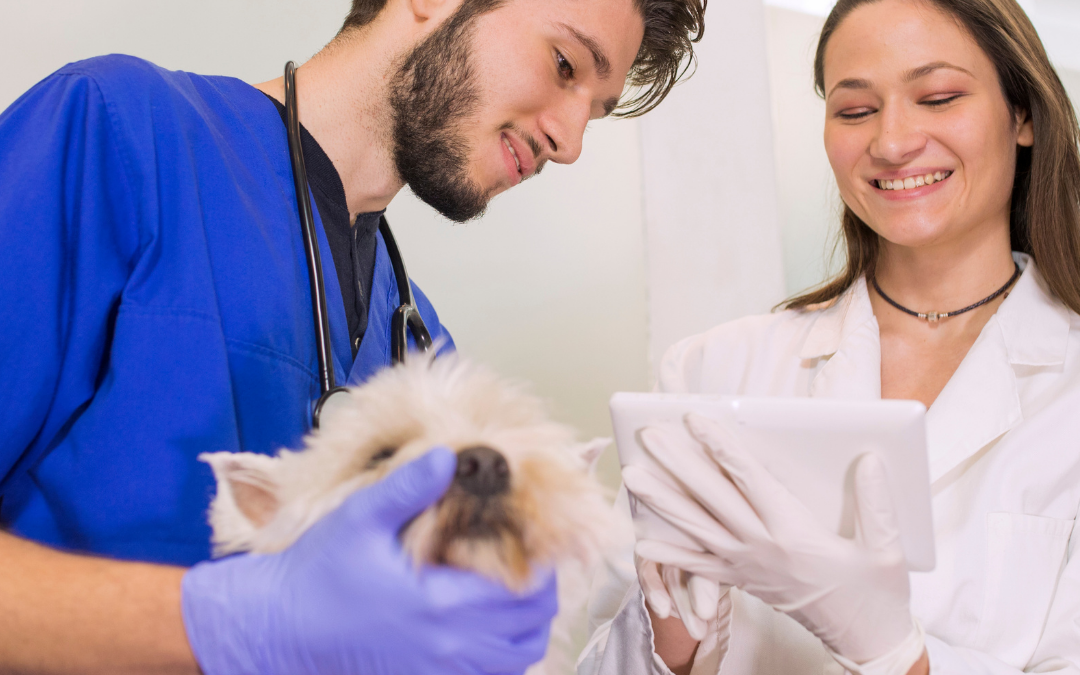What’s new in veterinary medicine?
As veterinary professionals, you are always looking for the best ways to aid your clients. From becoming a more efficient clinic to learning new techniques and skills for advanced care during surgeries. So what’s new in veterinary medicine? Within the last year, many things have changed in the industry. People were maintaining their social distance by staying away from others and working from home. Similarly, they were looking to get outdoors more. As a result, this led to a LARGE increase in pet ownership. After the fact, the client base has gone from being semi-manageable to more than veterinary hospitals can keep up with.
A Positive Outlook:
Subsequently, new technology has been developed. This is to help you manage the influx of patients in your veterinary hospital. The technology is made to aid your staff. Also, to help with overall workflows. Telemedicine, for example, is becoming more accessible to veterinary hospitals and clients as well. Similarly, patient wearables are also here and ready to serve veterinary professionals. Wearables are made to help veterinary professionals in areas like multitasking without feeling overwhelmed. As you can see, wearables and telemedicine are just two of the things that have surged forward during 2020.
How many more clients are in your veterinary hospital?
During the 2020 pandemic, there was an increase in pet ownership. Just how much was that increase? The following table has the population percentages for different generations. Statista.com offered percentages of populations for different generations. Baby Boomers make up roughly 21.19 percent of the population. When that is put into a specific number it is about 69.56 million people. Likewise, Millennials and Generation Z. Millenials are about 72.12 million people and Generation Z is about 86 million people.
According to Today’s Veterinary Business Report, 16% of Generation Z purchased or adopted a pet. Subsequently, 13% of millennials did the same. This is an overwhelming number in comparison to the three percent increase of Baby Boomers.
| Baby Boomers | Millennials | Generation Z |
| 69.56 million x 0.03 = | 72.12 million x 0.13 = | 86 million x 0.16 = |
| 2.09 million more people adopted or purchased a pet | 9.38 million more people adopted or purchased a pet | 13.76 million more people adopted or purchased a pet |
Table 1
The table above outlines how much of a leap the United States took in the number of pet owners. While it doesn’t seem like a lot, there was an increase of 25.23 million people who got a pet in 2020. This does not specify they were first-time pet owners or if they already had a pet. The information included in this study was overall pets, not a specific species. Statistics have also been collected close to 80 percent of these people say that they plan on keeping the pet they got during 2020.
What Does This Mean for Veterinary Hospitals?
In 2020 alone there was a total of 103.6 billion dollars spent on pets in the United States. 31.4 billion was spent on veterinary services. The pie chart to the right of the screen shows the breakdown of pet owners in the United States. This data was recorded in 2020. Because of the surge of pets, veterinary professionals are starting to find themselves overbooked and understaffed to meet the demand of clients.
Burnout or Understaffed?
Throughout the pandemic, there have been changes made to better utilize staff in the veterinary industry. In a previous blog, we talked about how to make your clinic as efficient as you can. Efficiency in the Clinic, Under Your Control goes into detail about how you can make your veterinary hospital as efficient as possible. In the blog, you can read about little things that you can do in your veterinary hospital to ensure you are running a “tight ship.”
Burnout is another hot topic in the veterinary industry. After 2020, and the increase in patients that need to be cared for, hospitals find themselves understaffed. Wearable technology is available to help relieve hospitals of this obstacle. This technology is made to aid staff with patient monitoring throughout the day. This is so staff doesn’t become overwhelmed in their work. When you are understaffed it is hard to meet the needs of every patient. In some cases, the potential patients/clients are turned away. This is because the hospital is overbooked already.
Smart Harness Technology
MeasureON! is designed to be an assistant to veterinary professionals. It provides a new level of care in the industry giving practices real-time data, optimizing post-operative care. Its continuous monitoring has many different use cases in the hospital. One use case would be for overnight monitoring, especially if you have limited staff or no staff in the hospital. This allows you to check on your patients from the comfort of your home if you begin to worry. If you have patients that are recovering from surgery and are kept out of sight, alerts can be sent straight to your mobile device. Also, monitoring remotely is an easy way to handle the more aggressive patients that come in.
MeasureON! measures:
- Heart Rate
- Temperature
- Respiratory Rate
- It can stream a two-minute ECG on your mobile device.
Real-Time Wearable Monitoring:
MeasureON! has superior and real-time wearable monitoring capabilities during critical, post-anesthesia hours. This optimizes success and promotes patient well-being. As a result, patients have advanced care 24/7 without your staff manually checking their vitals at each interval. Also, accurate monitoring provides more consistent and reliable data to help your team better care for a critical patient. This means that your staff is better utilized. As well as they can also multitask without overwhelming themselves. It also allows you to detect a potential complication as soon as it happens instead of finding out the next time you would manually record vitals.
VetMeasure has been working to make the best continuous monitoring wearable in the industry, and it is ready to use. There are many different ways that the harness can be utilized in the hospital. However, one use is the same across the board: assisting veterinary professionals to harness their canine patients’ health.
Overall Outlook on Veterinary Technology:
Veterinary technology was made to help and it’s ready NOW. Things like wearables and telemedicine are what’s new in veterinary medicine. They are helping in clinics already, and are ready to serve you. MeasureON! assists in making the recovery process easier and less stressful because of the harness’ non-invasive wireless monitoring capabilities. New technology can be extremely helpful for overbooked, understaffed veterinary hospitals, and veterinary professionals looking to better the care of their canine patients before, during, and after operations.

